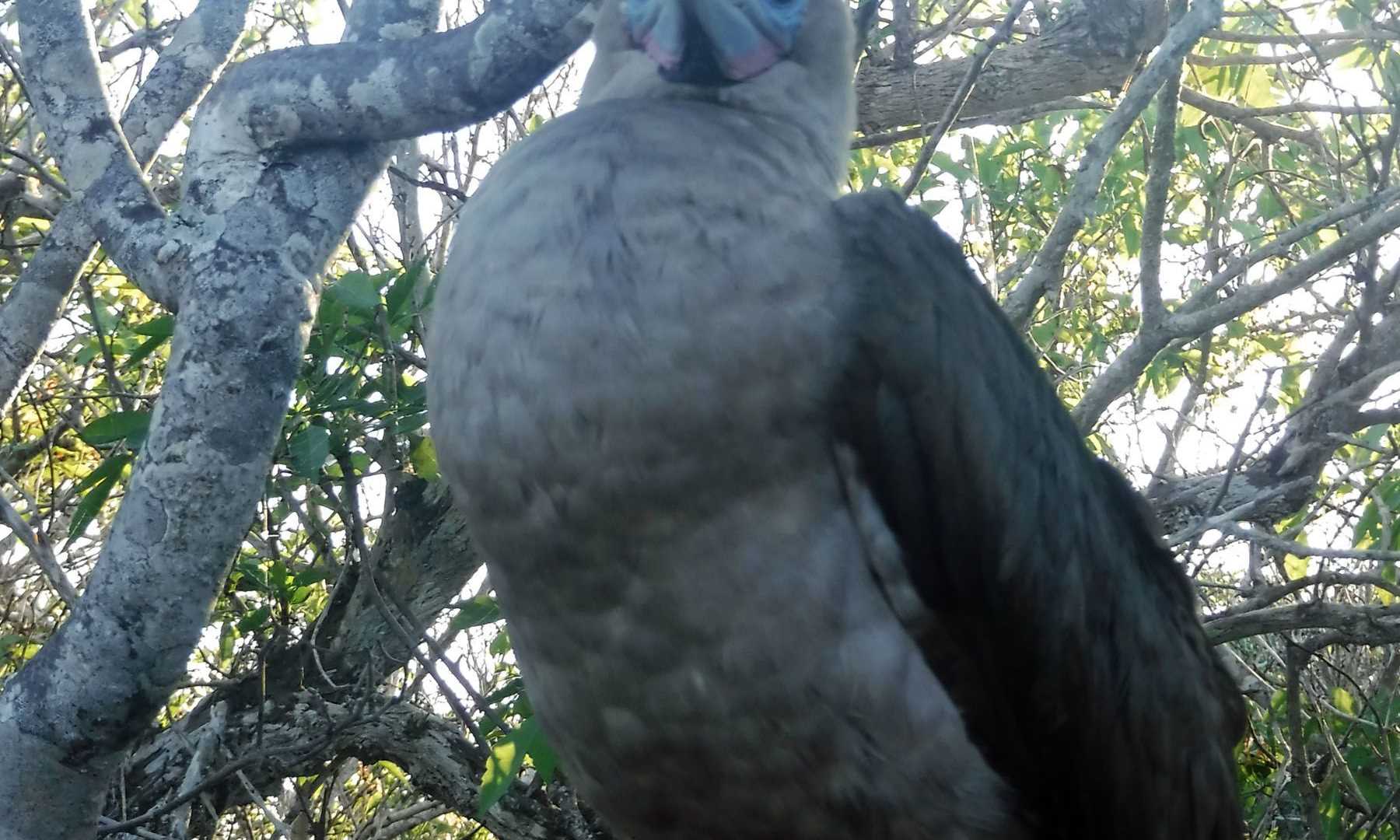Located up in the northernmost part of the archipelago, quite distant from any of the central islands, this particular island is extremely interesting. The isolation has made life possible only for sea birds, and they are within the most numerous inhabitants of the place.
The early morning light gave us a very good opportunity to see the walls of the crater that collapsed a few million years ago. This place has a special kind of atmosphere, with Nazca boobies, swallow-tailed gulls and the very colorful red-footed boobies together with the very contrasting landscape, making it a very unique site to be explored in this enchanted archipelago.
Prince Philip’s steps and its lava plateaus that have been conquered by palo santo trees have created the nesting territory for more boobies. As we headed out for the walk on the open area, we found ourselves surrounded again by lava flows, the territory of thousands storm petrels that covered the sky, at a first glimpse they looked like those clouds of mosquitos that are normally found on jungle areas. It is incredible to see how much activity can be found in this bizarre, distant place. As the petrels come here to nest, their predator, the short-eared owl quietly waits for them in the open fields, waiting, looking for the perfect time to attack.
The white coralline beach and the red mangroves make up the nesting place for red-footed boobies. Minor frigatebird males today are starting their mating ritual again, and we saw a few bachelors displaying their half-inflated pouches to females that did not seem to be particularly interested in them yet.
What a special way to end our expedition around this enchanted archipelago. The images of today will surely remain in our minds for the rest of our lives; we know now that this island will never leave us.







